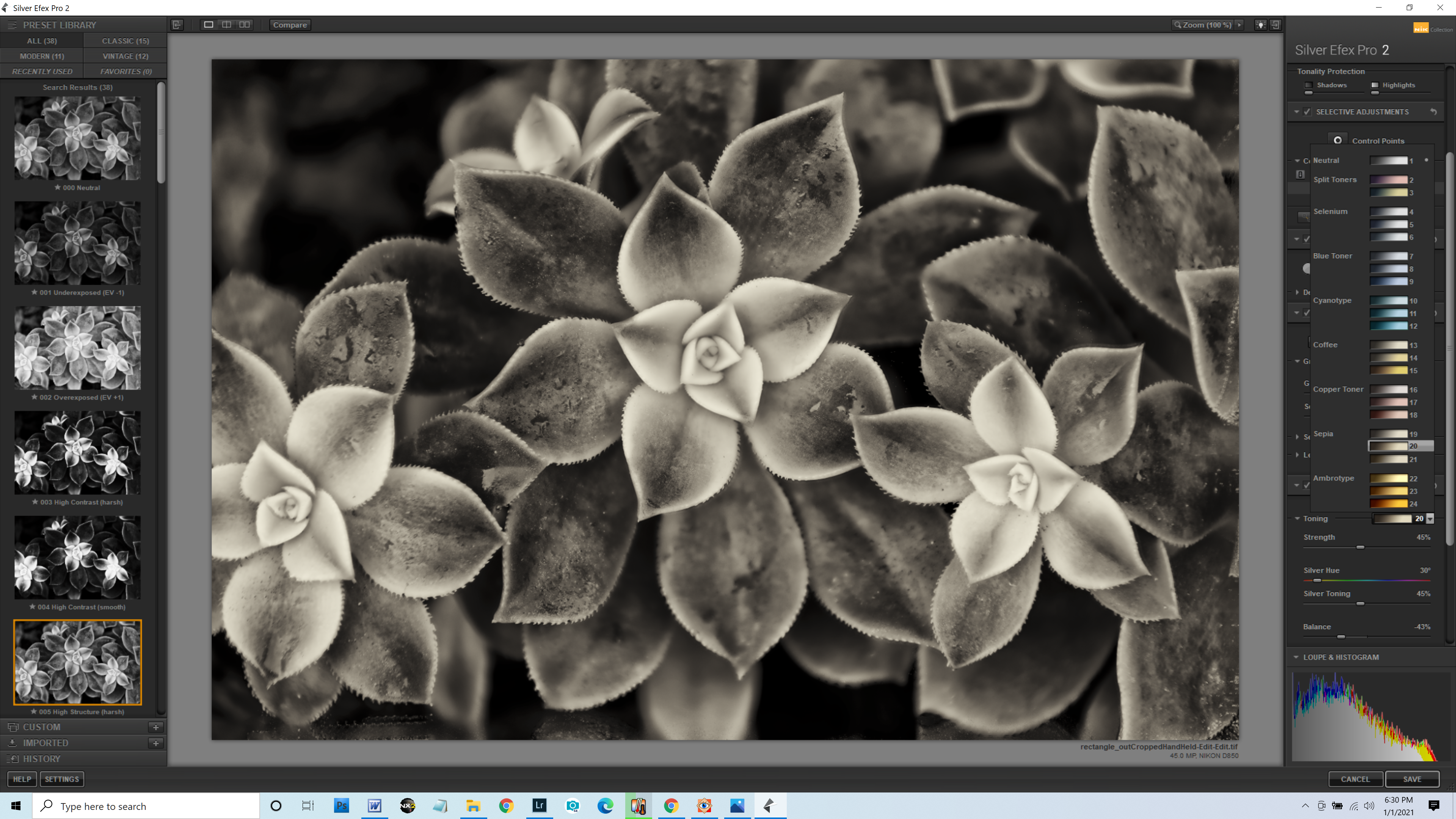

My day job that pays the big bills is a user-interface programmer so I am passionate about user-interface design. Once your image is done you may want to add some finishing touches like grain, a border, etc… You may also want to reduce the opacity so that the B&W work you’ve done is effectively letting the color bleed through, so there’s transparency (which is very useful for products like Lightroom since it doesn’t support layers). This is where the Local Adjustments section comes in so you make adjustments or add selective color if desired to your image (think Sin City b&w with red lips). One of the problems with black and white is that you don’t want to lose detail during the conversion and it’s not uncommon for some areas to just look blocked up or bleached out. Once your image is looking good you can start making it more interesting using the Creative Effects section. It’s not uncommon for converted black and white images to be too dark or too washed out, so basic adjustments can help a lot here.
This is where you start to get your image looking good as a black and white based on the preset you have chosen. Here’s a quick look at each of the sliders and parameters options, each of which can be enabled and disabled as needed using a checkbox and tweaked by expanding the control. Fortunately you can save (and even export) all your changes for use as a future preset, so once you have your favorite “look” then you simply need to click a preset and you are done. In all there are 8 different effect styles and over 100 presets, so many will find the exact look they want by just clicking through the list.įor those who want to use a preset as a starting point, but then fine tune their image there’s the right side which offers a wide variety of things that can be done to dial in adjustments to give you the exact look you want. The effects list is just a container for groups of presets. To the left of the user-interface is something that will seem familiar to Lightroom users – a preview window and a bunch of presets. However, I’m please to say that the folks at Topaz Labs have tried really hard to make it MUCH easier to realize your black and white vision. If the user-interface for a Black and White product doesn’t help you to get good results quickly, then there’s really no advantage of it over Photoshop, Lightroom or Aperture. Traditional Collection - Warm Tone I with a White Border Getting that perfect balance is an art form in and of itself, hence the need for products like B&W Effects. Using Photoshop, Lightroom or even Aperture can be maddening because images tend to be too dark, too washed out or too blocked up. As a result the quest begins to get good black and white and dial in the perfect results. Perhaps it was the way Ansel Adams did it, or perhaps the way you it done in a magazine recently, but whatever “it” is, simple methods don’t seem to have “it”. The key to good black and white is very subtle, but the key part is that you want your black and white image to look like something you have in your mind. Some will even say – just use a black and white preset in Lightroom, but if all of these methods left you unsatisfied with the result – you are not alone.

To the newbie, black and white seems easy – just desaturate the color away or use the grayscale mode in Photoshop. As a result, I was super excited to see what Topaz had to offer in this super affordable product. Products like Nik Software’s Silver Efex Pro 2 is selling like hot cakes Epson printers like the 38 are being used heavily in their Advanced Black & White mode for black & white printing and photographers like Vincent Versace are coming out with books like Welcome to Oz 2.0 to capitalize on this boom. Topaz Labs has introduced B&W Effects at a perfect time because Black & White photography is getting hot again.


 0 kommentar(er)
0 kommentar(er)
